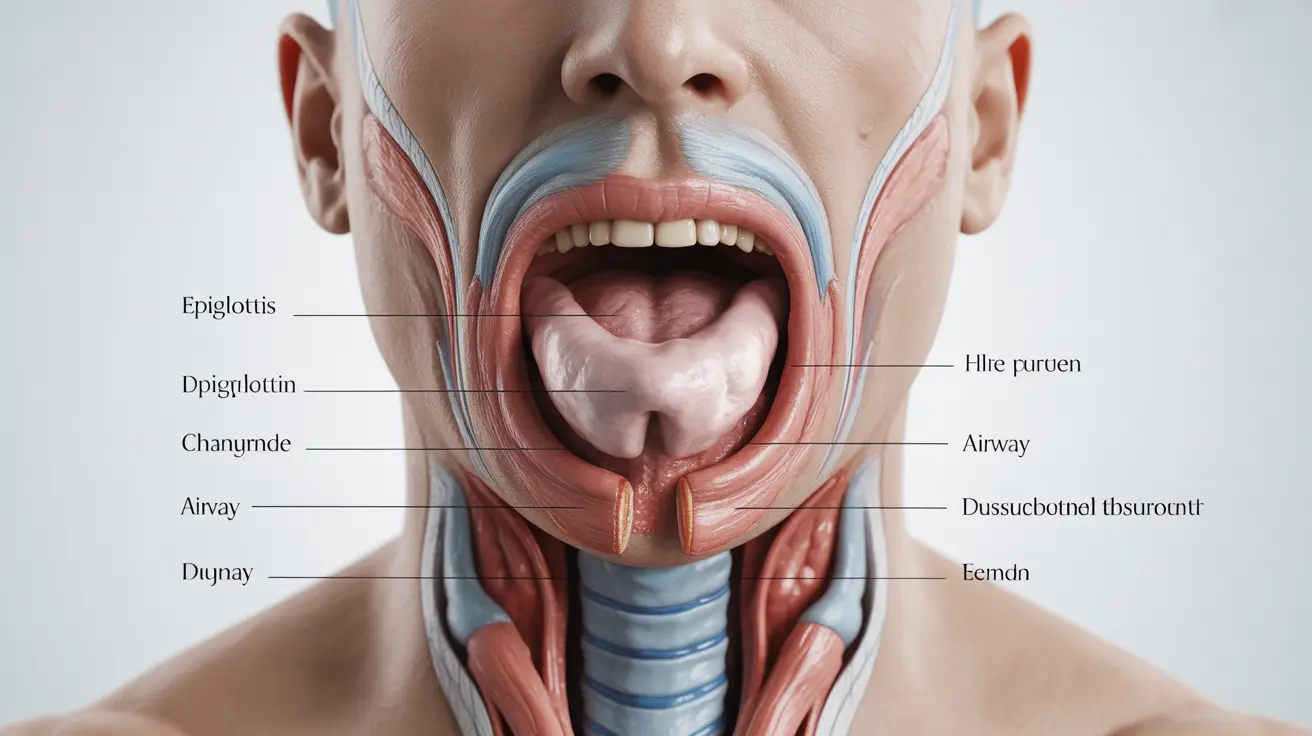A swollen epiglottis, also known as epiglottitis, is a potentially life-threatening condition that requires immediate medical attention. This serious condition occurs when the epiglottis – the small cartilage flap that covers your windpipe while swallowing – becomes inflamed and swollen, potentially blocking your airway.
Understanding the signs and symptoms of a swollen epiglottis is crucial, as early recognition and prompt medical intervention can be lifesaving. This comprehensive guide will help you identify warning signs, understand causes, and learn about treatment options for this serious condition.
Understanding the Epiglottis and Its Function
The epiglottis plays a vital role in protecting your airway during swallowing. This leaf-shaped piece of cartilage automatically closes over your windpipe when you swallow, preventing food and liquids from entering your lungs. When it becomes swollen, this essential function can be compromised, leading to serious breathing difficulties.
Recognizing the Signs and Symptoms
Early recognition of epiglottitis symptoms is crucial for seeking timely medical care. Common signs include:
- Severe sore throat that develops rapidly
- Difficulty and pain when swallowing
- Muffled or hoarse voice
- Drooling
- Fever
- Sitting upright and leaning forward (tripod position)
- Difficulty breathing
- Rapid onset of symptoms
If you or someone else experiences these symptoms, especially difficulty breathing or swallowing, seek emergency medical care immediately. Do not attempt to examine the throat or lay the person down, as this could worsen the airway obstruction.
Common Causes and Risk Factors
Several factors can lead to a swollen epiglottis:
- Bacterial infections (particularly Haemophilus influenzae type b)
- Viral infections
- Physical injury to the throat
- Chemical burns or thermal injury
- Allergic reactions
- Direct trauma
While children were historically at higher risk for epiglottitis, widespread vaccination against Hib has significantly reduced cases in children. However, adults can still develop the condition, particularly those with weakened immune systems.
Diagnosis and Medical Assessment
Healthcare providers use several methods to diagnose epiglottitis:
- Physical examination (performed carefully to avoid aggravating symptoms)
- Lateral neck X-rays
- Flexible fiber-optic laryngoscopy
- Blood tests to check for infection
- Throat cultures
These diagnostic procedures are performed in a controlled medical setting where emergency intervention is immediately available if needed.
Treatment Approaches
Treatment for a swollen epiglottis typically involves:
- Immediate airway management
- Hospitalization in intensive care
- Intravenous antibiotics
- Corticosteroids to reduce inflammation
- Oxygen therapy
- Possible intubation or tracheostomy in severe cases
Prevention Strategies
Several measures can help prevent epiglottitis:
- Keeping vaccinations up to date, especially the Hib vaccine
- Maintaining good hand hygiene
- Avoiding hot foods and beverages that could burn the throat
- Protecting against physical trauma to the throat
- Regular medical check-ups for those with compromised immune systems
Frequently Asked Questions
What are the main symptoms of a swollen epiglottis and when should I seek immediate medical attention?
The main symptoms include severe sore throat, difficulty swallowing, muffled voice, drooling, and breathing difficulties. Seek immediate medical attention if you experience any difficulty breathing, severe throat pain, or trouble swallowing, as these could indicate a medical emergency.
How is epiglottitis diagnosed, and what tests are typically used to confirm the condition?
Diagnosis typically involves a careful physical examination, lateral neck X-rays, flexible fiber-optic laryngoscopy, blood tests, and throat cultures. These tests are performed in a controlled medical setting where emergency intervention is available if needed.
Can epiglottitis be caused by injuries or burns to the throat, and how do these differ from infections?
Yes, epiglottitis can be caused by physical injuries or burns to the throat. While infectious epiglottitis develops gradually and often includes fever and other infection symptoms, injury-related cases typically occur immediately after trauma or exposure to hot substances and may not involve fever.
What are the most effective treatments for epiglottitis, including antibiotics and other interventions?
The most effective treatments include immediate airway management, hospitalization, intravenous antibiotics, corticosteroids to reduce swelling, and oxygen therapy. In severe cases, intubation or tracheostomy may be necessary to maintain an open airway.
How can I prevent epiglottitis, especially if I have a weakened immune system or haven't received the Hib vaccine?
Prevention strategies include getting vaccinated against Hib, practicing good hand hygiene, avoiding very hot foods and drinks, protecting against throat injuries, and maintaining regular medical check-ups. Those with weakened immune systems should be especially vigilant about these preventive measures and consult their healthcare provider about additional precautions.




